Maurice Chabas (1862-1947) By Dr. Myriam de Palma
Get a Chabas Certificate of Authenticity for your painting (COA) for your Chabas drawing.
For all your Chabas artworks you need a Certificate of Authenticity (COA) in order to sell, to insure or to donate for a tax deduction.
Getting a Chabas Certificate of Authenticity (COA) is easy. Just send us photos and dimensions and tell us what you know about the origin or history of your Chabas painting or drawing.
If you want to sell your Chabas painting or drawing use our selling services. We offer Chabas selling help, selling advice, private treaty sales and full brokerage.
We have been authenticating Chabas and issuing certificates of authenticity since 2002. We are recognized Chabas experts and Chabas certified appraisers. We issue COAs and appraisals for all Chabas artworks.
Our Chabas paintings and drawings authentications are accepted and respected worldwide.
Each COA is backed by in-depth research and analysis authentication reports.
The Chabas certificates of authenticity we issue are based on solid, reliable and fully referenced art investigations, authentication research, analytical work and forensic studies.
We are available to examine your Chabas painting or drawing anywhere in the world.
You will generally receive your certificates of authenticity and authentication report within two weeks. Some complicated cases with difficult to research Chabas paintings or drawings take longer.
Our clients include Chabas collectors, investors, tax authorities, insurance adjusters, appraisers, valuers, auctioneers, Federal agencies and many law firms.
We perform Maurice Chabas art authentication, appraisal, certificates of authenticity (COA), analysis, research, scientific tests, full art authentications. We will help you sell your Maurice Chabas or we will sell it for you.
French Symbolist painter Maurice Chabas came from a family of painters, including brother Paul Chabas. Maurice Chabas was born on September 26th 1862, in Nantes, in a cultured and scholarly family. The eldest boy, according to the customs of the time, Chabas took over the family business as an adult despite the fact that he was interested in painting. His two younger brothers, Maurice and Paul were also interested in painting and were encouraged by their father, who was also fond of painting. His brothers attended the Academie Julien and became famous, and this fact stuck with him until the day he died.
Catalogue of the October 2009 – January 2010 Pont-Aven Museum exhibition
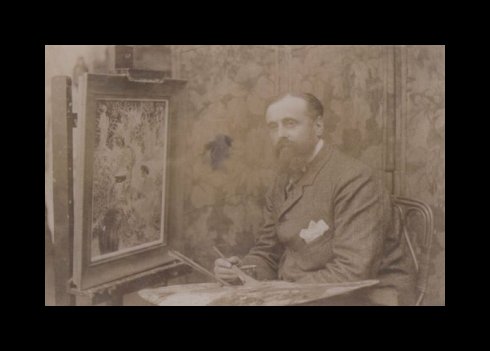
Photograph of the artist painting
In 1900, he moved to 3, Villa Sainte-Foy in Neuilly-sur-Seine. His studio soon became a meeting place attended by distinguished scholars like Maurice Maeterlinck, Edouard Schuré, Léon Bloy, the sociologist Lucien Lévy-Brulh, Professor Charles Richet, Camille Flammarion, Joséphin Péladan and René Guénon. Chabas did not find much success until 1900, when he quickly gained notoriety in art circles.
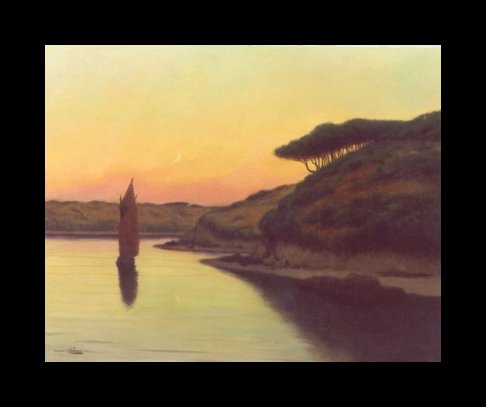
Sunset River
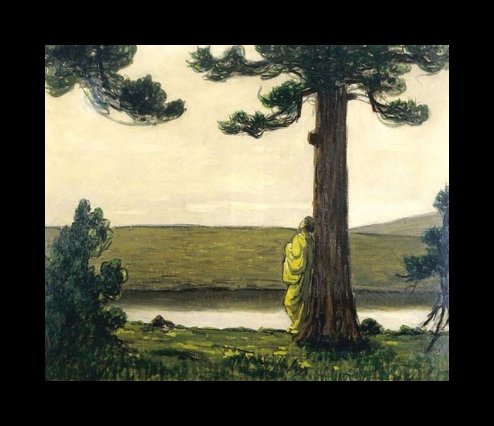
Riverbank
Chabas would use philosophy and mysticism to create his Symbolist compositions, along with his academic training. He studied under Bouguereau and Robert-Fleury, and never gave much consideration to one style of painting or another. Throughout his whole career, this mystical artist endeavoured to transmit, via his art, his spiritual convictions and especially his belief in the survival of the soul after the death of the body.
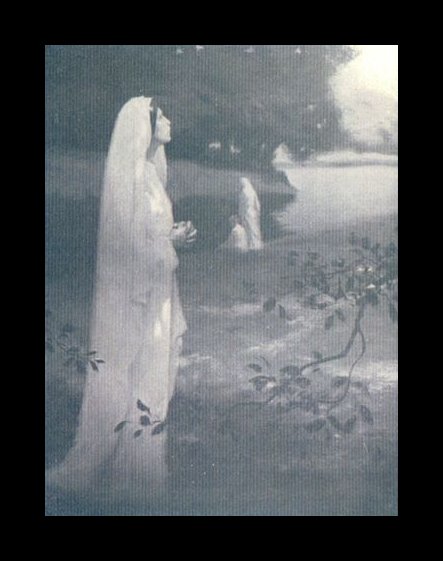
Woman in the River
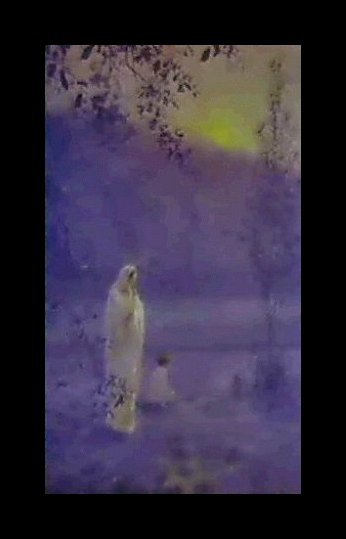
Woman in the River Blue

Women
Later on, he would be tempted by the neo-impressionism techniques and its minuscule scattered spots in vivid colors, while simultaneously and quite paradoxically using synthetic techniques, where he surrounded wide shapes of solid colors with black rims. Then his imagination and his desire to innovate would lead him to purify and simplify his shapes until reaching abstraction.
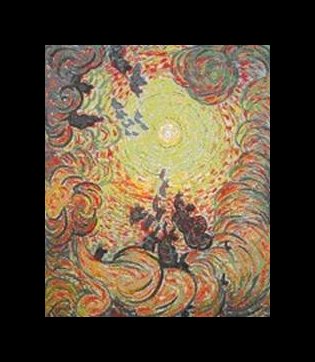
Color
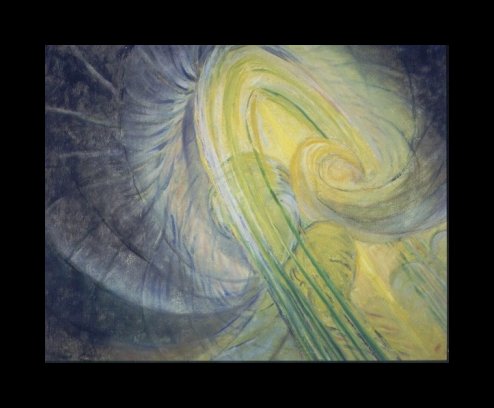
Swirl
He would then abandon all references to reality. This efflorescence of styles is particularly due to the intimate relationship he established between artistic expression and his spiritual aspirations, while refusing to comply to a simply formalist vision of art. To him, shapes were merely a vector of his spiritual message; and by diversifying their appearances, Chabas strived at transmitting the multiplicity of shapes in which the divine appears.

Figures
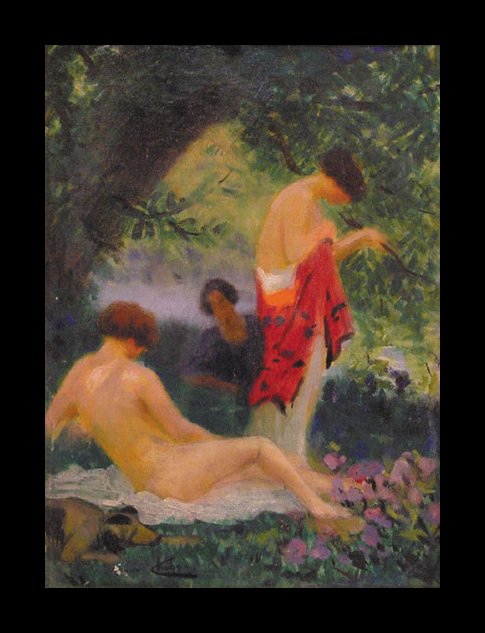
Bathers
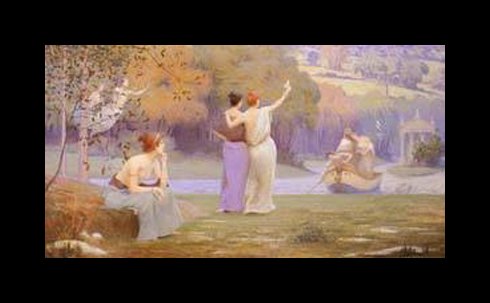
Return to Cythera
At the end of his career, Chabas declared he felt definitely impotent in confronting and overcoming the disasters that devastated the world. He then became convinced that these disasters were the direct consequences of the lack of ideal and humanity in people. Living almost totally isolated, he was then completely dedicated to religious and spiritual paintings.

Religious
His paintings displayed a more and more ethereal, bright and colorful non-figurative and abstracted world, which naturally expressed the communication of the mysteries of religion. It is in Versailles, where he had decided to retire, that François Mauriac wrote to him “You have understood the necessity of forgetting yourself in contemplation.” He died on December 11, 1947.
If you believe you own a work of art by Maurice Chabas, contact Art Certification Experts. We authenticate, appraise, research and provide Certificates of Authenticity (COA's) for works by Maurice Chabas.
Reviews
1,217 global ratings
5 Star
4 Star
3 Star
2 Star
1 Star
Your evaluation is very important to us. Thank you.
